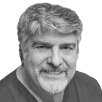TAMPA, Florida, USA — The Mexican professor and infection control specialist Dr. Enrique Acosta Gío received the prestigious "James J. Crawford 2010 Award" during the recent OSAP symposium in Tampa, Florida for his contributions to occupational and dental health patient safety.
The Organization for Safety and Asepsis and Prevention (OSAP) awarded to the Mexican expert the "James J. Crawford Award", which was previously received by prestigious academic such as John Molinari and William Rutala, and researchers such as Walter Bond and Donald Marianos, of the Centers for Disease Control and Prevention (CDC) in United States, among other professional leaders.
"This award is another example of the research level conducted at Universidad Nacional Autonoma de Mexico (UNAM), and particularly an international recognition of the academic programs offered at the Dentistry School," said Dr. Acosta Gío, the first researcher not based in United States to receive the award.
Dr. Acosta Gío received the award from Dr. John Molinari, who mentioned the numerous scientific and educational publications, conferences and courses by Dr. Acosta that have contributed to dental safety. In particular, the OSAP board mentioned Dr. Acosta Gío's role in making OSAP a member of the Global Alliance for Patient Safety, led by the World Health Organization.
Dr. Acosta Gío, who is also International Editor of JADA, praised researchers who work to improve dental safery in clinics, and to prevent the transmission of infectious diseases.
At the OSAP symposium in Tampa, Acosta Gío participated in a panel with Ami Collins from CDC and John Hunt of United Kingdom on “The H1N1 Pandemic One Year After.”
The H1N1 Pandemic, One Year After
One year after the outbreak in Mexico of the H1N1 influenza, which caused a worldwide pandemic and widespread panic, the head of infection control at the National University of Mexico's Dental School, Dr. Enrique Acosta-Gio, said to Dental Tribune Latin America that we all are fortunate that the virus was not as aggressive as initially thought.
Dr. Acosta-Gio added that the measures adopted by Mexican Health officers will continue to be analyzed as text book examples for future outbreaks of influenza and other emerging infectious diseases.
An internationally renowned infection control specialist, Dr. Acosta-Gio served on UNAM’s scientific team responding to the outbreak in April 2009.
In hindsight, some critics have said that responses by WHO and many governments to the H1N1 virus were too extreme.
After the outbreak of SARS in 2003 and the threat of avian H5N1 influenza, preparedness and response plans were in place the world over. Everybody was looking at China and South East Asia when H1N1 struck in Mexico.
Uncertain Virus
The expert said that when the first cases of H1N1 were reported in Mexico, epidemiologists all over the world were reminded of the 1918 Spanish Flu, a pandemic of influenza virus (also H1N1) that caused around 50 million deaths.
"A year ago we were responding to an emerging disease that we didn't know", Dr. Acosta-Gio said. "Had it been a highly contagious killing virus, it would have caused great human damage and economic turmoil." The infectious control expert pointed out that decisions were based on the information available at the time.
The third week in April 2009, the Mexican Secretary for Health received confirmation from CDC that a previously unseen virus had emerged. Any delay in responding would unjustifiably put lives at risk. There was no time to hesitate or improvise. Social distancing measures were implemented swiftly, and most public venues were closed.
"What we see looking back," Dr. Acosta-Gio said, "is that fortunately this was not a particularly aggressive virus, which offered the community a valuable opportunity to improve their compliance with hand-washing, cough etiquette, and seasonal flu immunization. These infection control measures have been effective in keeping people safe."
During social distancing, the campus where Dr. Acosta-Gio works was closed, but the Dental School immediately started planning for the safe return of patients, faculty, staff and students. Infection control measures were reinforced. One year after, compliance remains high, "this is a continuing challenge in dental education."
Future Outbreak
"We were very fortunate with the H1N1," he said, "but we know that sometime in the future another outbreak will happen."
There are many lessons to be learned from the H1N1 pandemic, Dr. Acosta-Gio points out. “Globally we’re interconnected: the recent volcano eruption in Iceland had immediate global impact and the safe vs. disproportionate argument surfaces again."
"Many people thought that closing much of Europe's airspace was too much in the absence of evidence that airborne ash would make flying unsafe," he added, "but don't realize that authorities have to take preventive measures. These measures cause fear, discomfort, and a heavy economic burden, but they are designed to protect human lives."
In Mexico, as a result of the outbreak, people are now much more conscious of basic hygienic measures, like keeping their hands clean. They carry hand-washing gels, which are available in most public places.
But compliance gradually wears off. That is one of the reasons why UNAM’s Dental School offers internationally-recognized academic courses for faculty and dental professionals in Infection Prevention and Control, Occupational Safety, and Patient Safety. "Now the work of epidemiologists and infection control specialists is better appreciated," says Dr. Acosta-Gio. "We've all gained from this experience."
Resources
• UNAM: www.odonto.unam.mx
• OSAP: www.osap.org
TAMPA / MEXICO — El especialista mexicano en control de infecciones Dr. Enrique Acosta Gío recibió un importante premio durante el ...
MEXICO CITY, Mexico: The head of infection control at the School of Dentistry of the National University of Mexico (UNAM), Dr Enrique Acosta-Gio, said in an...
Patient safety and infection control are important topics in healthcare, both in the developed and developing parts of the world. The Organization for ...
The earthquake in Haiti has left little of what had been an already poor health-care and dental health-care system. Even prior to the earthquake, medical ...
Tres reconocidos especialistas ofrecieron durante la 78 Edición del evento conocido como “Innovation Day” conferencias en Costa Rica sobre aspectos de ...
El Congreso Nacional e Internacional del Colegio de Cirujanos Dentistas de Costa Rica, celebrado del 8 al 10 de septiembre en el hotel Crowne Plaza Corobici...
El International Congress of Oral Implantologists (ICOI) presenta por primera vez en Costa Rica un congreso dedicado exclusivamente a la Implantología ...
El Colegio de Cirujanos Dentistas de Costa Rica les extiende un afectuoso saludo a todos los colegas y les invita a unirse al evento del gremio ...
El Colegio de Cirujanos Dentistas de Costa Rica (CCDCR) forma parte activa del programa de vacunación nacional para todos los odontólogos del sector ...
La Dra. María Fernanda Atuesta ha demostrado desde hace años su liderazgo a nivel nacional e internacional. Como presidenta de la Federación ...
Webinars en vivo
lun. 22 de abril 2024
8:00 CST (Mexico City)
Prof. Dr. Erdem Kilic, Prof. Dr. Kerem Kilic
Webinars en vivo
mar. 23 de abril 2024
11:00 CST (Mexico City)
Webinars en vivo
mié. 24 de abril 2024
6:00 CST (Mexico City)
Dr. Yin Ci Lee BDS (PIDC), MFDS RCS, DClinDent Prosthodontics, Dr. Ghida Lawand BDS, MSc, Dr. Oon Take Yeoh, Dr. Edward Chaoho Chien DDS, DScD
Webinars en vivo
mié. 24 de abril 2024
11:00 CST (Mexico City)
Webinars en vivo
vie. 26 de abril 2024
10:00 CST (Mexico City)
Webinars en vivo
lun. 29 de abril 2024
10:30 CST (Mexico City)
Prof. Roland Frankenberger Univ.-Prof. Dr. med. dent.
Webinars en vivo
mar. 30 de abril 2024
11:00 CST (Mexico City)



 Austria / Österreich
Austria / Österreich
 Bosnia y Herzegovina / Босна и Херцеговина
Bosnia y Herzegovina / Босна и Херцеговина
 Bulgaria / България
Bulgaria / България
 Croacia / Hrvatska
Croacia / Hrvatska
 República Checa y Eslovaquia / Česká republika & Slovensko
República Checa y Eslovaquia / Česká republika & Slovensko
 Francia / France
Francia / France
 Alemania / Deutschland
Alemania / Deutschland
 Grecia / ΕΛΛΑΔΑ
Grecia / ΕΛΛΑΔΑ
 Italia / Italia
Italia / Italia
 Países Bajos / Nederland
Países Bajos / Nederland
 Nórdico / Nordic
Nórdico / Nordic
 Polonia / Polska
Polonia / Polska
 Portugal / Portugal
Portugal / Portugal
 Rumania y Moldavia / România & Moldova
Rumania y Moldavia / România & Moldova
 Eslovenia / Slovenija
Eslovenia / Slovenija
 Serbia & Montenegro / Србија и Црна Гора
Serbia & Montenegro / Србија и Црна Гора
 España / España
España / España
 Suiza / Schweiz
Suiza / Schweiz
 Turquía / Türkiye
Turquía / Türkiye
 Reino Unido e Irlanda / UK & Ireland
Reino Unido e Irlanda / UK & Ireland
 Internacional / International
Internacional / International
 Brasil / Brasil
Brasil / Brasil
 Canadá / Canada
Canadá / Canada
 EE UU / USA
EE UU / USA
 China / 中国
China / 中国
 India / भारत गणराज्य
India / भारत गणराज्य
 Japón / 日本
Japón / 日本
 Paquistán / Pākistān
Paquistán / Pākistān
 Vietnam / Việt Nam
Vietnam / Việt Nam
 ASIA / ASEAN
ASIA / ASEAN
 Israel / מְדִינַת יִשְׂרָאֵל
Israel / מְדִינַת יִשְׂרָאֵל
 Algeria, Morocco & Tunisia / الجزائر والمغرب وتونس
Algeria, Morocco & Tunisia / الجزائر والمغرب وتونس
 Oriente Medio / Middle East
Oriente Medio / Middle East
:sharpen(level=0):output(format=jpeg)/up/dt/2024/04/Ferula-quirurgica.jpg)
:sharpen(level=0):output(format=jpeg)/up/dt/2024/04/Exocad-Insights.jpg)
:sharpen(level=0):output(format=jpeg)/up/dt/2024/04/Tratamiento-con-fluoxetina.jpg)
:sharpen(level=0):output(format=jpeg)/up/dt/2024/04/Panel-Experts-1.jpg)
:sharpen(level=0):output(format=jpeg)/up/dt/2024/04/Congreso_Seger_2024.jpg)










:sharpen(level=0):output(format=png)/up/dt/2013/03/LM-Dental.png)
:sharpen(level=0):output(format=png)/up/dt/2022/01/HASSBIO_Logo_horizontal.png)
:sharpen(level=0):output(format=png)/up/dt/2020/02/Camlog_Biohorizons_Logo.png)
:sharpen(level=0):output(format=png)/up/dt/2014/02/kuraray.png)
:sharpen(level=0):output(format=png)/up/dt/2014/02/MIS.png)
:sharpen(level=0):output(format=png)/up/dt/2022/06/RS_logo-2024.png)
:sharpen(level=0):output(format=jpeg)/up/dt/e-papers/338233/1.jpg)
:sharpen(level=0):output(format=jpeg)/up/dt/e-papers/336829/1.jpg)
:sharpen(level=0):output(format=jpeg)/up/dt/e-papers/329684/1.jpg)
:sharpen(level=0):output(format=jpeg)/up/dt/e-papers/328283/1.jpg)
:sharpen(level=0):output(format=jpeg)/up/dt/e-papers/326428/1.jpg)
:sharpen(level=0):output(format=jpeg)/up/dt/e-papers/323247/1.jpg)
:sharpen(level=0):output(format=jpeg)/up/dt/2010/06/d002bea52d1d33ef4fbd9108ad709e85.jpg)

:sharpen(level=0):output(format=jpeg)/up/dt/2024/04/Ferula-quirurgica.jpg)
:sharpen(level=0):output(format=gif)/wp-content/themes/dt/images/no-user.gif)
:sharpen(level=0):output(format=jpeg)/up/dt/2010/06/dd685d9d46ef584c9c1534c4e7a059ec.jpg)
:sharpen(level=0):output(format=jpeg)/up/dt/2017/01/3afffe80dab8ebbe06a6f765f31bddc0.jpg)
:sharpen(level=0):output(format=jpeg)/up/dt/2011/04/d16f7d926c787d6aa7eb39f0bcd6a7a4.jpg)
:sharpen(level=0):output(format=jpeg)/up/dt/2010/02/d30c50286a3af1acf44094a4d9c1cb0d.jpg)
:sharpen(level=0):output(format=jpeg)/up/dt/2024/03/78-Innovation-Day.jpg)
:sharpen(level=0):output(format=jpeg)/up/dt/2016/10/5a68d2e2974675b6eca11b3280515ef4.jpg)
:sharpen(level=0):output(format=jpeg)/up/dt/2019/02/ICOI-Costa-Rica.jpg)
:sharpen(level=0):output(format=jpeg)/up/dt/2022/09/CIOCR2022.jpg)
:sharpen(level=0):output(format=jpeg)/up/dt/2021/05/Vacunacion-tico.jpg)
:sharpen(level=0):output(format=jpeg)/up/dt/2021/11/Mari%CC%81a-Fernanda-Atuesta-by-Eduardo-Sani%CC%81n3.jpg)














:sharpen(level=0):output(format=jpeg)/up/dt/2024/04/Ferula-quirurgica.jpg)
:sharpen(level=0):output(format=jpeg)/up/dt/2024/04/Exocad-Insights.jpg)
:sharpen(level=0):output(format=jpeg)/up/dt/2024/04/Tratamiento-con-fluoxetina.jpg)
:sharpen(level=0):output(format=jpeg)/up/dt/e-papers/336829/1.jpg)
:sharpen(level=0):output(format=jpeg)/up/dt/e-papers/329684/1.jpg)
:sharpen(level=0):output(format=jpeg)/up/dt/e-papers/328283/1.jpg)
:sharpen(level=0):output(format=jpeg)/up/dt/e-papers/326428/1.jpg)
:sharpen(level=0):output(format=jpeg)/up/dt/e-papers/323247/1.jpg)
:sharpen(level=0):output(format=jpeg)/up/dt/e-papers/338233/1.jpg)
:sharpen(level=0):output(format=jpeg)/up/dt/e-papers/338233/2.jpg)
:sharpen(level=0):output(format=jpeg)/wp-content/themes/dt/images/3dprinting-banner.jpg)
:sharpen(level=0):output(format=jpeg)/wp-content/themes/dt/images/aligners-banner.jpg)
:sharpen(level=0):output(format=jpeg)/wp-content/themes/dt/images/covid-banner.jpg)
:sharpen(level=0):output(format=jpeg)/wp-content/themes/dt/images/roots-banner-2024.jpg)
To post a reply please login or register